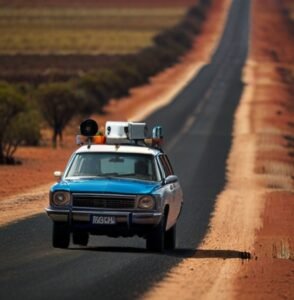Soaring gas prices can put a strain on your wallet, no matter where you live in the US or Australia. But fret not, fuel-conscious drivers! This comprehensive guide equips you with a toolbox of practical hacks to maximize your car’s MPG (miles per gallon) on both American highways and Australian roads. By incorporating these simple tips into your driving routine, you can squeeze more miles out of every tank and save money at the pump.
Understanding Fuel Efficiency: A Foundation for Savings
Before diving into specific hacks, let’s establish a basic understanding of fuel efficiency. Measured in MPG, it represents the distance a car can travel on a single gallon of fuel. Several factors influence fuel efficiency, including:
- Car Size and Engine Type: Generally, smaller cars with fuel-efficient engines will achieve better MPG than larger vehicles with high-powered engines.
- Driving Habits: Aggressive acceleration, harsh braking, and excessive idling all contribute to decreased fuel efficiency.
- Road Conditions: Stop-and-go city traffic typically yields lower MPG compared to consistent highway driving.
- Vehicle Maintenance: A well-maintained car with properly inflated tires and clean air filters operates more efficiently.
Fuel-Saving Strategies for American & Australian Drivers:

Now, let’s explore actionable hacks you can implement to maximize fuel efficiency on both American and Australian roads:
Master the Art of Smooth Sailing:
-
- Gentle Acceleration: Avoid the urge to slam on the gas pedal from a standstill. Instead, accelerate gradually and smoothly to conserve fuel.
- Maintain Consistent Speeds: Erratic speeding up and slowing down wastes fuel. Utilize cruise control on highways (where permitted) to maintain a steady pace.
- Anticipate Traffic Flow: Maintain a safe following distance and avoid unnecessary braking. By anticipating traffic flow, you can minimize sudden stops and starts.
Tire TLC: The Importance of Proper Inflation:
-
- Check Tire Pressure Regularly: Underinflated tires increase rolling resistance, which translates to lower fuel efficiency. Refer to the recommended tire pressure on the placard inside your driver’s door jamb and inflate all four tires accordingly, including the spare.
- Consider Nitrogen Inflation: While not a magic bullet, nitrogen inflation can help maintain consistent tire pressure for longer periods, potentially improving fuel economy (consult your mechanic for suitability and availability).
Lightweight Living: Declutter Your Car:
-
- Haul Only What You Need: Excess weight in your car forces the engine to work harder, leading to decreased fuel efficiency. Remove unnecessary items from your trunk and keep your car clutter-free.
Air Filter Finesse: Ensuring Clean Airflow:
-
- Replace Air Filters Regularly: A clogged air filter restricts clean air intake to the engine, reducing efficiency. Consult your owner’s manual for recommended air filter replacement intervals and stick to the schedule.
- Consider Upgraded Air Filters: For dusty environments common in parts of Australia and the US, high-performance air filters can offer better protection and potentially improve fuel efficiency (consult your mechanic for compatibility).
Fuel Choice Considerations (US & Australia):
-
- US: In the US, opting for higher octane gasoline (e.g., 91 octane or higher) might be recommended for certain high-performance engines. However, for most everyday vehicles, standard unleaded gasoline (usually 87 octane) is sufficient and offers the best fuel economy.
- Australia: Australia offers various fuel options, including E10 (blend of 9% ethanol and 91% gasoline), regular unleaded (usually 91 octane), and premium unleaded (usually 95 or 98 octane). Choose the fuel type recommended by your car manufacturer for optimal performance and fuel efficiency.
Fuel-Efficient Driving Techniques (US & Australia):
-
- Minimize Idling: Excessive idling wastes fuel. Turn off your engine if you’ll be stopped for more than a minute (consider auto-stop/start features if your car is equipped).
- Utilize Highway Gears: When cruising on highways (US freeways and Australian motorways), utilize higher gears to maintain speed without straining the engine.
Planning and Route Optimization (US & Australia):
-
- Combine Errands: Plan your errands efficiently to minimize short trips. Consolidate errands into one outing to reduce the number of times you start and stop your car.
- Traffic Apps for the Win: Utilize traffic apps (like Waze or Google Maps) to plan routes that avoid congestion and stop-and-go traffic, which can utilize traffic apps (like Waze or Google Maps) to plan routes that avoid congestion and stop-and-go traffic, which can significantly impact fuel efficiency.
- Consider Alternative Routes: For scenic drives, it’s tempting to take the most picturesque route. However, if fuel efficiency is a priority, research alternative routes that might be less congested or have fewer stop signs and traffic lights.
Air Conditioning Optimization:
-
- Open Windows for Short Trips: For short trips, consider rolling down the windows instead of cranking up the air conditioning. This can improve fuel efficiency, especially in city driving.
- Maintain Cabin Air Filter: A clogged cabin air filter restricts airflow and forces the AC system to work harder. Replace the cabin air filter according to the manufacturer’s recommendations.
Vehicle Maintenance Matters:

-
- Schedule Regular Maintenance: Regular maintenance, including oil changes, spark plug replacements, and air filter changes, ensures your car operates at peak efficiency. A well-maintained car will generally achieve better fuel economy.
- Address Check Engine Lights Promptly: Don’t ignore the check engine light! It could indicate a problem that’s impacting your car’s fuel efficiency. Schedule a diagnostic check with a mechanic to identify and address the issue.
Fuel-Efficient Car Options (US & Australia):
-
- Consider Fuel Economy Ratings: When shopping for a new car, prioritize fuel efficiency. Both the US Environmental Protection Agency (EPA) and the Australian Government provide fuel economy ratings for various car models. Research and choose a car with a rating that aligns with your driving needs.
- Electric Vehicles (EVs) and Hybrids: While the upfront cost might be higher, electric vehicles (EVs) and hybrids offer significantly improved fuel efficiency and can be a great option for eco-conscious drivers, especially in areas with readily available charging infrastructure.
Beyond the Hacks: Additional Tips for American & Australian Drivers
- US: Take advantage of gas station loyalty programs that can offer discounts at the pump. Some gas stations also offer higher-tier fuel options that might boast slight fuel efficiency improvements (consult your car’s manual for compatibility).
- Australia: Fuel prices in Australia can fluctuate based on location and global oil prices. Utilize fuel price comparison apps to find the most affordable gas stations in your area. Consider supermarket fuel dockets, which can offer significant savings at the pump.
Conclusion: Drive Smart, Save Money, and Explore Further
By incorporating these fuel-saving hacks into your driving routine, you can make a significant difference in your car’s fuel efficiency, regardless of whether you’re cruising down American highways or traversing Australian roads. Remember, even small changes in driving habits can add up to substantial fuel savings over time.
So, embrace these tips, drive smart, and explore further, knowing you’re maximizing your MPG and minimizing your impact on the environment. Happy (and fuel-efficient) travels!
Sources:
- US Environmental Protection Agency (EPA) – Fuel Economy: https://www.epa.gov/fueleconomy
- Australian Government – Fuel Efficiency: https://www.infrastructure.gov.au/sites/default/files/documents/2023-24_infra_pbs_02_itrdca.pdf
- AAA (American Automobile Association) – Fuel Efficiency Tips: https://www.mobil.com/en/sap/personal-vehicles/car/vehicle-maintenance/reduce-fuel-consumption
- RACV (Royal Automobile Club of Victoria) – Fuel Efficiency Guide: https://www.racv.com.au/



